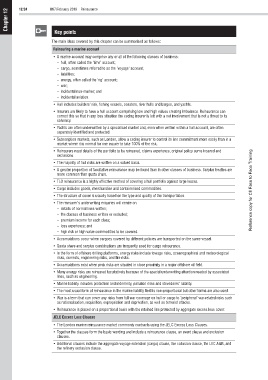Page 354 - M97TB9_2018-19_[low-res]_F2F_Neat2
P. 354
12 12/24 M97/February 2018 Reinsurance
Chapter
Key points
The main ideas covered by this chapter can be summarised as follows:
Reinsuring a marine account
• A marine account may comprise any or all of the following classes of business:
– hull, often called the ‘time’ account;
– cargo, sometimes referred to as the ‘voyage’ account;
– liabilities;
– energy, often called the ‘rig’ account;
–war;
– incidental non-marine; and
– incidental aviation.
• Hull includes builders’ risk, fishing vessels, coasters, river hulls and barges, and yachts.
• Insurers are likely to have a hull account comprising low and high values creating imbalance. Reinsurance can
correct this so that in any loss situation the ceding insurer is left with a net involvement that is not a threat to its
solvency.
• Yachts are often underwritten by a specialised market and, even when written within a hull account, are often
separately identified and protected.
• Subscription markets, such as London, allow a ceding insurer to control its line commitment more easily than in a
market where it is normal for one insurer to take 100% of the risk.
• Reinsurers need details of the portfolio to be reinsured, claims experience, original policy sums insured and
exclusions.
• The majority of hull risks are written on a valued basis.
• A greater proportion of facultative reinsurance may be found than in other classes of business. Surplus treaties are
more common than quota share.
• TLO reinsurance is a highly effective method of covering a hull portfolio against large losses.
• Cargo includes goods, merchandise and containerised commodities. Reference copy for CII Face to Face Training
• The structure of cover is usually based on the type and quality of the transportation.
• The reinsurer’s underwriting enquiries will centre on:
– details of normal lines written;
– the classes of business written or excluded;
– premium income for each class;
– loss experience; and
– high risk or high value commodities to be covered.
• Accumulations occur when cargoes covered by different policies are transported on the same vessel.
• Quota share and surplus combinations are frequently used for cargo reinsurance.
• In the form of offshore drilling platforms, energy risks include towage risks, oceanographical and meteorological
risks, currents, engineering risks, and fire risks.
• Accumulations exist when peak risks are situated in close proximity in a major offshore oil field.
• Many energy risks are reinsured facultatively because of the special underwriting attention needed by associated
lines, such as engineering.
• Marine liability includes protection and indemnity, pollution risks and stevedores’ liability.
• The most usual form of reinsurance in the marine liability field is non-proportional but other forms are also used.
• War is a term that can cover any risks from full war coverage on hull or cargo to ‘peripheral’ war-related risks such
as nationalisation, requisition, expropriation and deprivation, as well as terrorist attacks.
• Reinsurance is placed on a proportional basis with the retained line protected by aggregate excess loss cover.
JELC Excess Loss Clauses
• The London marine reinsurance market commonly contracts using the JELC Excess Loss Clauses.
• Together the clauses form the basic wording and include a reinsurance clause, an event clause and exclusion
clauses.
• Additional clauses include the aggregate voyage extension (cargo) clause, the collusion clause, the LEC A&B, and
the refinery exclusion clause.

